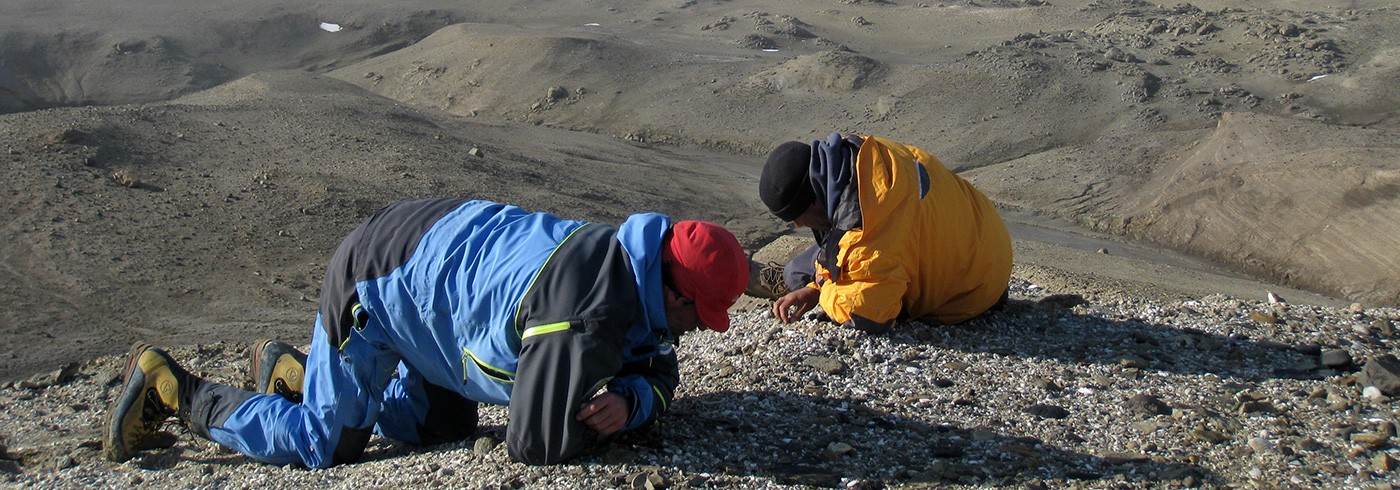The frozen Garden of Eden: on the hunt for Eocene mammals
1 January 2011 - 28 February 2011How did the paleogene mammals of the southern hemisphere evolve and spread?
The record of Antarctic mammals and other terrestrial vertebrates is still very poor. New specimens of mammals, other vertebrates, and fossil plants would give a more precise picture of Gondwanan biodiversity and palaeoecology before the Late Eocene glaciation of Antarctica.
Seymour Island is the only place one finds evidence of the biogeographical role of the continent during the Cretaceous–Tertiary mammalian transition and of the Paleocene–Eocene dispersal corridors between South America and Australia. Fifty-million-yearold Eocene rocks on the island have yielded the only fossil mammals of Antarctica. Seymour Island is part of the less than 2 per cent of the continent that is ice free, providing a keyhole view into the Paleogene world of this landmass.
Our most important find was an Eocene whale – the earliest from Antarctica – which shed light on the early evolution of whales and their adaptation to cold waters. In addition, 250 fossil bones of up to human-sized penguins were collected. They supplement the type material collected here by the Swedish South Pole Expedition of 1901−1903. We also found shark teeth in the uppermost parts of the sequence, providing the latest record of chondrichthyans in Antarctica. These teeth will help us date the separation of South America from Antarctica and the establishment of the circum-Antarctic current. We also collected many fossils of rays, chimaeras, and teleost fishes, which will build our understanding of Eocene fish diversity before the freezing of the Antarctic continent. We also found one tooth of a terrestrial mammal. Enamel microstructure analysis indicates that the specimen belongs to a member of the ungulate family Trigonostylopidae related to those from South America.
On a forthcoming 2012 expedition, we will focus on the youngest portion of Seymour Island, to find more shark teeth for isotope analysis, and on Paleocene strata, which have so far have yielded only a few penguin fossils and no mammalian remains.
The results from the expedition will be published in scientific journals at the beginning of 2012. The whale results were presented at a conference, the 11th International Symposium on Antarctic Earth Science held in July 2011. They were also featured on National Geographic Daily News.










